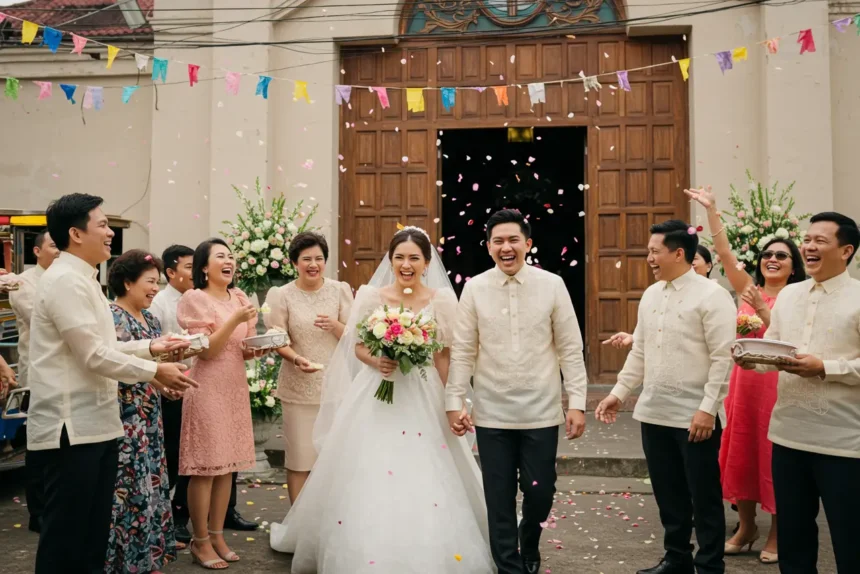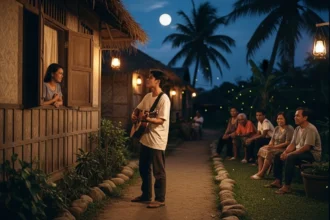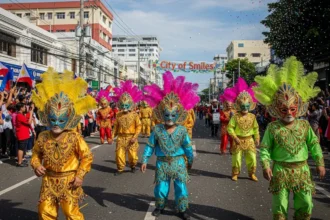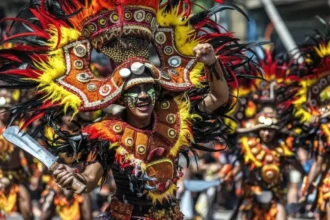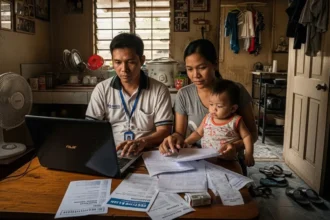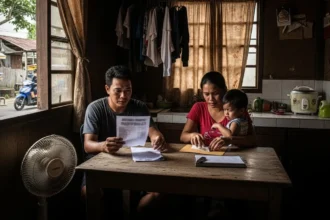Every Filipino wedding feels like a story – a mix of faith, family, and pamahiin. From the pamamanhikan (formal proposal) to the veil and cord ceremony, our Filipino wedding traditions go beyond romance; they’re about honoring roots and community.
- 👨👩👧👦 1. Pamamanhikan – The Traditional Courtship Visit
- 💍 2. Engagement & Pre-Wedding Customs
- ⛪ 3. Church Ceremony Traditions
- 💐 4. Roles of Ninongs and Ninangs
- 🎎 5. Filipino Wedding Superstitions (Pamahiin sa Kasal)
- 🎉 6. Wedding Reception Traditions
- 🕊️ 7. Modern Filipino Weddings
- ❓ FAQs About Filipino Wedding Traditions
- 🌸 Love, Tradition, and the Filipino Way
- 🧭 References
In the Philippines, a wedding isn’t just a union of two people – it’s the joining of two families, sometimes even two barangays! From the laughter of Tito Boy at the pamamanhikan table to the emotional walk down the church aisle, every step is guided by custom and belief.
Some of these rituals trace back to Spanish times, others from indigenous or Chinese influence, but they all share one thing: the hope for a lasting, harmonious marriage. So whether you’re soon-to-wed, ninang sa kasal, or just love-love-love the idea of weddings, this guide will walk you through the most meaningful Filipino practices – and the pamahiin that make them unforgettable.
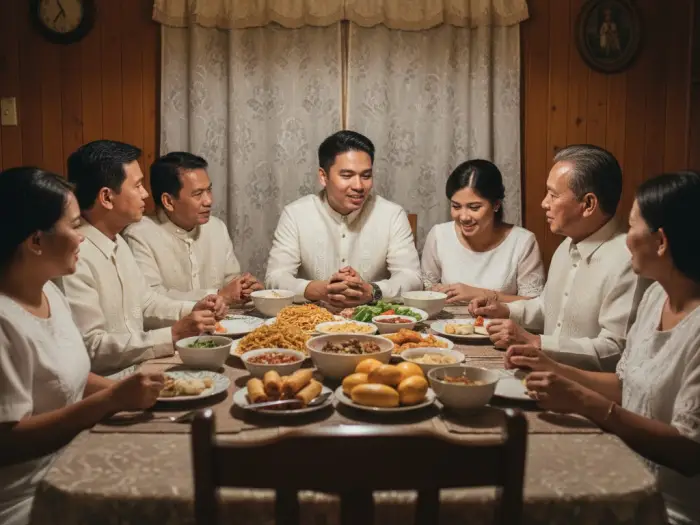
👨👩👧👦 1. Pamamanhikan – The Traditional Courtship Visit
Before the “Will you marry me?” era of engagement rings and Instagram proposals, there was pamamanhikan – a heartfelt Filipino tradition where the groom’s family formally visits the bride’s home to ask for her hand in marriage.
In the old days, this visit wasn’t just a polite gesture; it was a serious negotiation between two families. The groom’s parents, often joined by uncles, aunts, or ninongs, would bring gifts like food, fruits, or lechon manok to symbolize goodwill. The bride’s family would then serve a meal in return – a sign of acceptance.
More than formality, pamamanhikan was the foundation of mutual respect. It’s where both families would discuss wedding details – date, budget, guest list, even where the couple would live after marriage. Sometimes it could last hours, filled with laughter, advice, and teasing from elders (“Kailan ang apo namin?”).
Today, the tradition has evolved. Some couples do it in restaurants or virtually via video call, especially when families live far apart. But the heart remains the same – asking permission, showing respect, and celebrating unity.
For many, this meeting marks the true beginning of a wedding journey – that moment when two families stop being strangers and start becoming one.
Table: Typical Pamamanhikan Roles and Gifts
| Role | Symbolic Role | Common Offering |
|---|---|---|
| Groom’s Family | Seeks permission and goodwill | Food, gifts, wine, or lechon |
| Bride’s Family | Grants approval and hospitality | Acceptance meal or token gift |
| Ninongs/Ninangs | Witness and moral support | Blessing and guidance |
Even with all our modern changes, pamamanhikan reminds us that love, in Filipino culture, isn’t just between two people – it’s a bridge built between families.
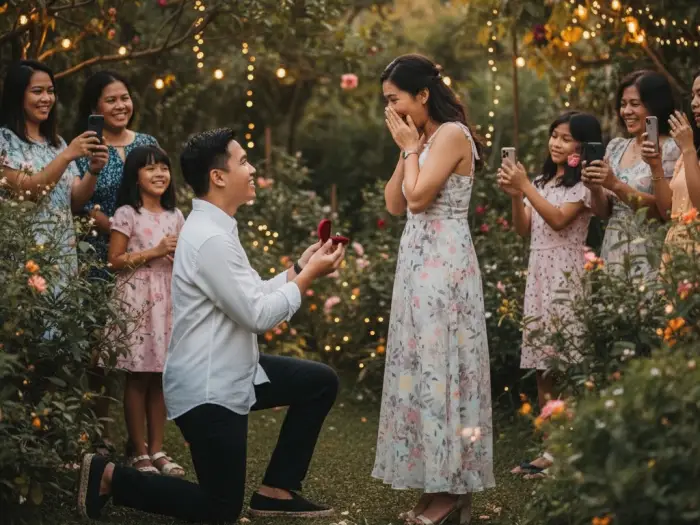
💍 2. Engagement & Pre-Wedding Customs
Once the pamamanhikan is done and both families have given their blessing, the engagement period officially begins – a time filled with symbolic pre-wedding customs that blend romance, tradition, and a bit of Filipino practicality.
In the old days, engagements weren’t sealed with diamond rings but through bigay-kaya – a custom where the groom’s family offered gifts or financial support to help with the wedding. These could include food, livestock, or even a small dowry meant to honor the bride’s parents and show the groom’s readiness to provide.
Some regions also practiced pamanhikan sa simbahan – a formal visit to the parish priest to announce the upcoming wedding and seek guidance. It was both a spiritual step and a social announcement that the couple was officially engaged.
Meanwhile, other couples marked their engagement with pamanhikan-style gatherings that combined both families for a shared meal – much like a mini Media Noche, full of laughter, advice, and stories from the elders.
Though today’s engagements often center around romantic proposals, social media posts, and shiny rings, the old spirit of bigay-galang remains. Many modern couples still visit the bride’s parents to express gratitude and seek blessing before announcing the wedding.
At its heart, Filipino engagement customs remind us that love is not rushed. It’s built carefully – with family, faith, and paggalang guiding every step toward the altar.
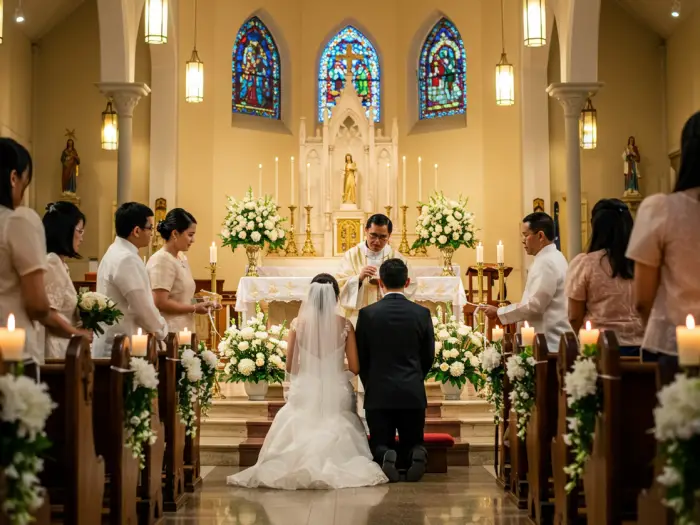
⛪ 3. Church Ceremony Traditions
For many Filipinos, the wedding ceremony itself is a sacred celebration of faith, unity, and family. Rooted in centuries of Catholic influence, the church wedding remains the heart of a Filipino marriage – solemn yet filled with deep symbolism that blends religion with cultural identity.
Each part of the ceremony carries meaning beyond the vows. The veil, cord, arrhae, and unity candle aren’t just decorative – they’re timeless symbols of what it means to build a life together: faith, prosperity, endurance, and shared light.
During the veil ceremony, the ninongs and ninangs drape a white veil over the couple’s shoulders, signifying unity and divine protection. The cord, often shaped like a figure eight (infinity), is then looped around them – a promise of unbroken love.
The arrhae, or wedding coins, consists of thirteen gold or silver coins that the groom hands to the bride. Traditionally, it symbolizes his commitment to provide and manage family resources with trust and fairness. Today, it also represents shared financial partnership.
Then there’s the unity candle, lit by the bride and groom using flames from two smaller candles – symbolizing two lives merging into one light, one purpose, one journey.
Together, these rituals transform a wedding from mere ceremony to sacred covenant – a reflection of the Filipino belief that marriage is both a blessing and a lifelong promise under God’s guidance.
Table: Church Wedding Symbols & Meanings
| Element | Meaning | Who Participates |
|---|---|---|
| Veil | Unity and divine protection | Secondary Sponsors |
| Cord (Yugal) | Everlasting bond and strength | Secondary Sponsors |
| Arrhae Coins | Prosperity, trust, and partnership | Groom and Bride |
| Unity Candle | Shared faith and guiding light | Couple |
Each time you see these symbols in a Filipino wedding, you’re witnessing centuries of faith and love woven together – proof that in every “I do,” there’s a touch of history and heart.
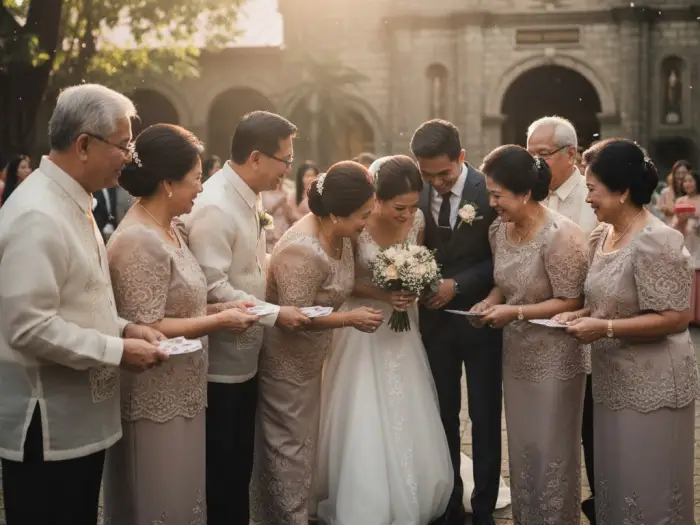
💐 4. Roles of Ninongs and Ninangs
In every Filipino wedding, the ninongs and ninangs (godparents) aren’t just ceremonial figures – they’re considered the couple’s second parents. Chosen with great care, they represent wisdom, stability, and the blessings that come from experience.
Traditionally, being asked to be a ninong or ninang is both an honor and a responsibility. These sponsors don’t just sign papers or hand over the wedding cord – they pledge to guide the newlyweds throughout married life. Their presence during the ceremony is a powerful symbol of community support, like saying, “You’re not in this alone – we’re with you.”
There are two kinds of sponsors: principal sponsors (ninong at ninang sa kasal), who stand as official witnesses, and secondary sponsors, who assist with the veil, cord, and candles. Each role reflects a different aspect of the couple’s journey – moral, spiritual, and emotional support.
In modern weddings, couples often mix family elders with mentors, bosses, or close friends as sponsors – people they truly look up to. Some even choose couples whose marriages they admire, hoping their example will rub off (sana all!).
Beyond the ceremony, ninongs and ninangs often become lifelong advisers – offering advice, prayers, and yes, sometimes pabaon. Because in Filipino culture, marriage isn’t just about two people promising forever – it’s a whole community cheering them on.
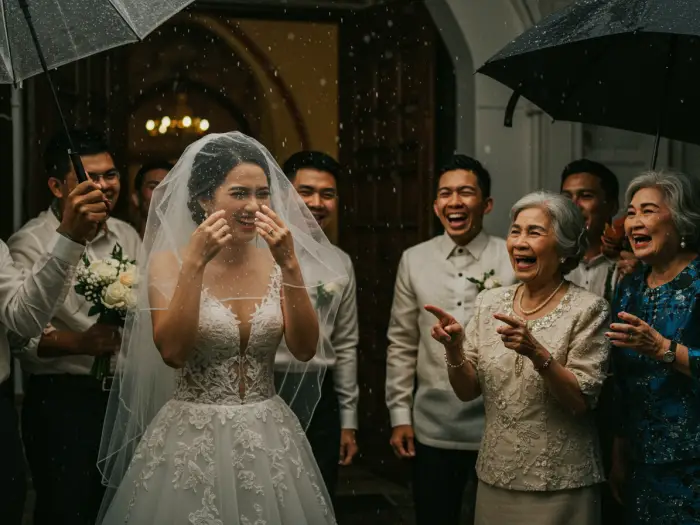
🎎 5. Filipino Wedding Superstitions (Pamahiin sa Kasal)
Every Filipino wedding comes with its share of pamahiin – superstitions that range from romantic to downright quirky. Some may sound funny, but for many couples (and especially the lolas watching from the sidelines), these beliefs carry weight. After all, who wants to risk bad luck on such a big day?
The most well-known is sukob, the belief that two siblings should not marry within the same year – or worse, on the same day – or misfortune might follow. It’s one of those unwritten family rules everyone somehow knows.
Then there’s the idea that rain on your wedding day brings blessings – not bad luck. It symbolizes cleansing and a shower of grace, though it can also mean a mad rush to save the bride’s gown!
Another superstition warns against trying on your wedding dress before the big day, believing it could “jinx” the ceremony. Some say dropping the ring, veil, or arrhae means future quarrels – though most couples just laugh it off and call it practice.
And don’t forget: breaking plates or glasses during the reception is sometimes seen as driving away evil spirits. Meanwhile, a tearful bride is said to cry away all sadness early, leaving only happiness for married life.
Superstitions may differ by region, but they all share the same message – a deep hope that marriage starts on the right foot. In true Filipino fashion, these pamahiin blend faith, humor, and tradition into a uniquely heartfelt mix.
Table: Common Wedding Superstitions & Meanings
| Pamahiin | Meaning | Belief Origin |
|---|---|---|
| Sukob | Bad luck if siblings marry in the same year | Catholic folklore |
| Rain on Wedding Day | Blessings and cleansing | Spanish influence |
| Trying on the Dress Early | Brings bad luck or delayed marriage | Folk belief |
| Dropping the Ring or Veil | Possible marital conflict | Local superstition |
| Breaking Glass or Plates | Drives away bad spirits | Chinese influence |
| Tearful Bride | Releases sadness before marriage | Filipino folk belief |
So whether you believe them or not, it doesn’t hurt to follow a few. After all, wala namang mawawala kung susundin – lalo na kung pampaswerte.
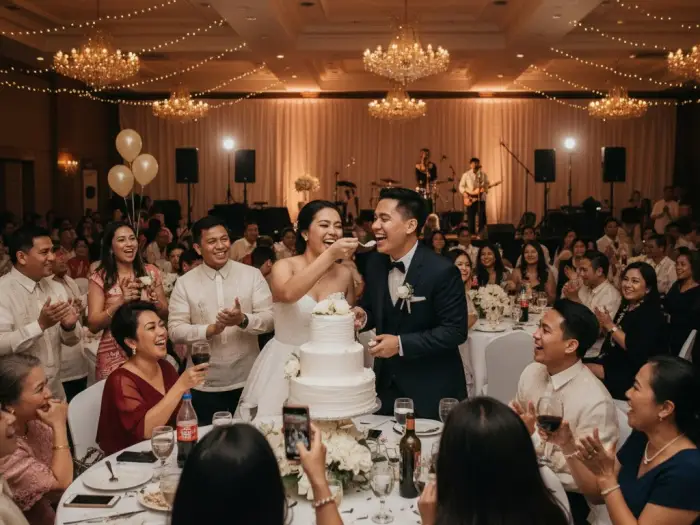
🎉 6. Wedding Reception Traditions
After the solemn church vows come the Filipino wedding reception – a joyful mix of food, laughter, and age-old customs that turn the event into a true celebration of community. Here, everyone – from lolo to pamangkin – joins in the fun, because for Filipinos, marriage isn’t complete without kainan at kasiyahan.
One of the most beloved traditions is the money dance, also known as sabitan ng pera. Guests pin bills onto the bride’s gown or the groom’s barong while dancing, symbolizing wishes of prosperity and support for their new life together. Some even get creative – folding the bills into flowers or hearts before pinning them!
Then there’s the cake-cutting ceremony, where the couple feeds each other a slice to show love and partnership. It’s a sweet (and slightly messy) reminder of care and sharing. In some weddings, this is followed by the toast, where ninongs and ninangs raise their glasses in blessing.
Another highlight is the first dance, a tender moment that often leads to laughter when friends join in. And in true Pinoy fashion, you can’t skip the lechon – a centerpiece that symbolizes abundance and festivity.
Regional traditions also shine during receptions: in the Visayas, there’s pahiyas-style décor; in Mindanao, kulintang music fills the air. Modern weddings might have DJs, photobooths, or even TikTok dance challenges, but the core spirit remains – family, food, and saya.
No matter how elegant or simple the setup, the Filipino wedding reception captures what we value most: togetherness and joy in sharing love’s biggest milestone.

🕊️ 7. Modern Filipino Weddings
Today’s Filipino weddings may look different from those of our parents and grandparents, but the heart remains the same – love wrapped in family and faith.
Modern couples are now blending tradition with creativity. Some still hold pamamanhikan dinners, but instead of gathering at home, they meet over coffee or a Zoom call. Engagement announcements? Usually done online, complete with cinematic proposal videos and heartfelt captions (“She said yes!”).
Weddings themselves have also evolved. Minimalist garden ceremonies, beach weddings in Batangas or Siargao, and rustic barn setups are becoming popular – often with smaller guest lists and more personal touches. Instead of lavish receptions, couples focus on meaningful moments and experiences.
Many are also embracing eco-conscious or budget-friendly weddings, opting for native materials, locally made giveaways, and digital invitations instead of printed ones. Even the ninongs and ninangs are becoming more hands-on – offering mentorship, not just ang pao.
But despite the modern twist, old traditions never truly disappear. Couples still light unity candles, wear barong and terno, and follow the pamahiin whispered by lola. It’s this blend – old and new, sacred and fun – that makes every Filipino wedding uniquely beautiful.
Because whether it’s a grand church affair or a simple civil wedding by the beach, one thing will always shine through: the Filipino belief that marriage is a union not just of hearts, but of families, faith, and community.
❓ FAQs About Filipino Wedding Traditions
- What are the most important Filipino wedding traditions?
Key traditions include pamamanhikan, the veil and cord ceremony, the exchange of arrhae coins, and the symbolic unity candle – all rooted in faith, family, and love. - What does pamamanhikan mean in Filipino culture?
Pamamanhikan is the formal visit where the groom’s family asks for the bride’s hand in marriage. It symbolizes respect, unity, and the official merging of two families. - What is the purpose of the arrhae coins?
The arrhae, or 13 wedding coins, represent prosperity, trust, and shared responsibility in managing the couple’s future household and finances. - Why do Filipino weddings include a veil and cord?
The veil represents unity and divine protection, while the cord (or yugal) symbolizes the couple’s everlasting bond – a promise of strength through all seasons. - Who are the ninong and ninang in a Filipino wedding?
They are the principal sponsors, chosen for their wisdom and experience. They act as second parents and lifelong guides to the couple. - What is sukob and why is it considered bad luck?
Sukob warns that two siblings marrying within the same year may face misfortune. It’s one of the most well-known Filipino wedding superstitions. - What are common Filipino wedding superstitions?
Avoid trying on the wedding dress before the big day, don’t drop the rings or veil, and welcome rain on your wedding as a sign of blessings. - Why do Filipinos have a money dance at weddings?
Guests pin bills on the couple during the dance to wish them prosperity and to help them start their married life with abundance and joy. - What is the difference between traditional and modern Filipino weddings?
Traditional weddings follow strict customs and rituals, while modern ones mix those with personal touches – like minimalist venues, eco-friendly décor, or smaller guest lists. - Do Filipino weddings still follow superstitions today?
Yes – even modern couples still honor many pamahiin as part of tradition or respect for elders, blending them naturally with contemporary wedding styles.
🌸 Love, Tradition, and the Filipino Way
A Filipino wedding is never just about two people saying “I do.” It’s about families joining hands, generations coming together, and love woven with pamahiin, faith, and laughter. From the humble pamamanhikan to the grand money dance, every gesture tells a story – one built on respect, community, and hope.
Even as weddings evolve with time, these traditions remind us of who we are. They connect us to our parents and grandparents, to their lessons about patience, prayer, and partnership. And somehow, when the veil is draped, the arrhae coins shine, and the church bells ring, it all feels familiar – like home.
So whether your dream wedding is in a cathedral or by the sea, may you always carry the heart of what makes it truly Filipino: a love blessed by family, guided by faith, and celebrated with joy that echoes through generations.
Because in the end, it’s not just the vows that make the marriage – it’s the beautiful mix of love and tradition that keeps it strong for life.
🧭 References
- Brides – 13 Filipino Wedding Traditions
- Lin & Jirsa – Filipino Wedding Traditions
- Wikipedia – Marriage and wedding customs in the Philippines
- The Knot – 14 Filipino Wedding Traditions that Celebrate Family, Culture and Community
- Provenance – Filipino Wedding Traditions: A Comprehensive Guide



